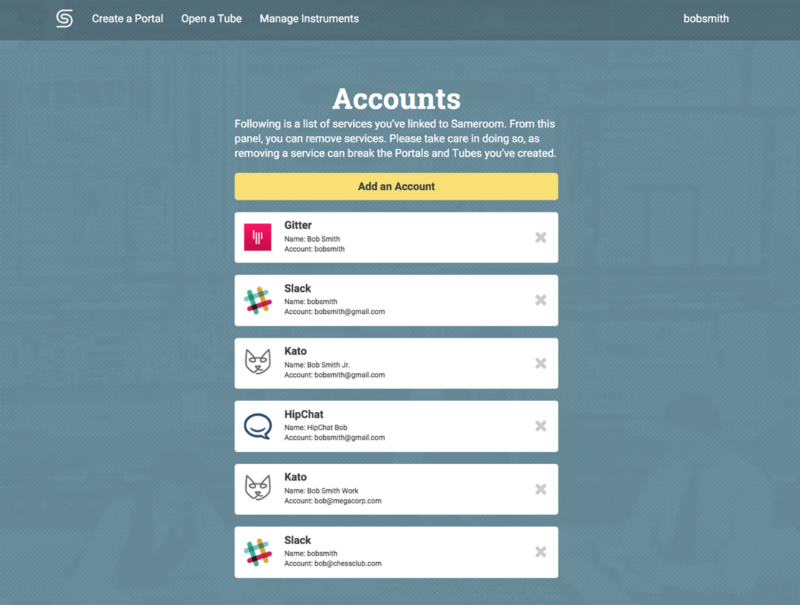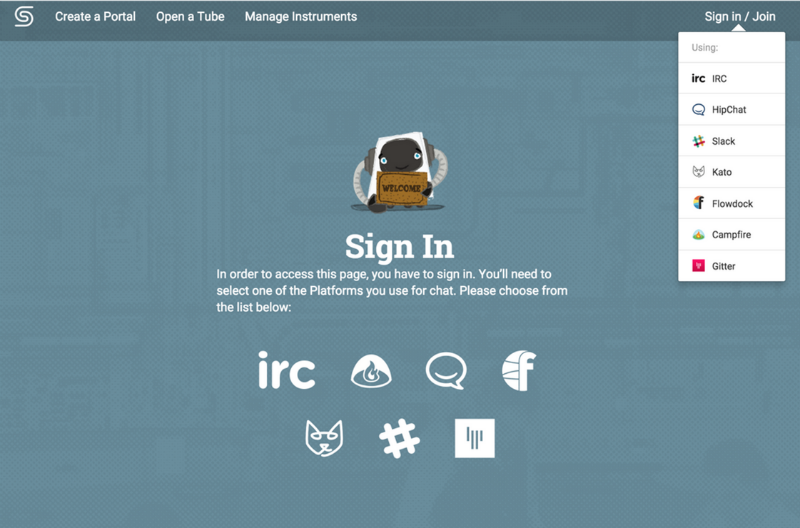How to combine services for teamwork: Sameroom project

In the past few years there has been an explosive growth in the number of instant messengers and services for team work - Slack, HipChat, Gitter, Kato - you can list for a long time (here there is a small comparison of such services).
Each of these products has its own strengths, but they are united by one drawback — they are all isolated from each other and, by choosing one of the systems, users cannot contact the users of competing services (the option of using several services is not considered in parallel as deliberately unreal). The creators of the Sameroom project decided to correct this situation.
')
The problem is isolation
The market for teamwork is developing rapidly, almost every month there are new interesting projects, but there is a reason why this diversity creates problems for users: it is the isolation of such systems.
If one of the teams within the enterprise uses the Slack messenger, and the other - IRC, then if there is a need for contact between the representatives of these two teams, they will need to use some third service in which everyone sits (for example, email or Skype). Do I need to prove that this is very inconvenient?
Honestly, the current situation reminds of prehistoric times, when, for example, there was no possibility to integrate Microsoft Mail and Lotus Notes. In 2015, this isolation of popular platforms looks at least strange.
The new project, the Sameroom project, is designed to help users of different communication services communicate with each other.

How it works
Currently, 7 platforms are available for integration: IRC, Campfire, HipChat, Flowdock, Slack, Gitter, and the Kato.im messenger created by us.
The essence of the work of Sameroom is to create a "pipe" (hereinafter without quotes) from a certain room of one platform to a certain room of another (or the same) platform. Through such a pipe, messages published in each of the two rooms connected by it are sent to another room.
Thus, users of the Slack or Gitter system can communicate with colleagues who prefer Kato or HipChat.

Details related to the authorship of messages transmitted through Sameroom, the features of the notifications about them, and others are described on the project's FAQ page.
There are two ways to create pipes - directly, if you have access to two commands, or by creating a "portal". A portal is a link to a room or channel through which any person can create a pipe for it from their chat. Thus, it is possible not to connect two teams rigidly, but any number of them. In the process of creating a portal, it is possible to specify who will pay for the pipes - the owner of the portal, or the creators of the pipes.

Issue price
A separate issue is the cost of using such a unifying service. The creators of Sameroom have provided several options for its use. For example, 30 messages per hour through the pipe can be sent for free (the counter is reset at the beginning of each hour) - this mode is suitable to just try how it works. In most cases, this bandwidth is clearly insufficient, so there are paid pipes that send an unlimited number of messages.
The price of the minimum paid plan is $ 9 per month - for this money the user gets the opportunity to use up to 3 active paid pipes simultaneously.
There are also plans to simultaneously use up to 40 active paid pipes (the Pro plan for $ 49 per month) and up to 500 active paid pipes (the Enterprise plan for $ 399 per month).
Important point: the user of the minimum paid plan can create dozens of paid pipes, but he will have to deactivate most of them, leaving a maximum of 3 of them active. Otherwise, all its pipes will forward no more than 30 messages per hour.
In addition, Sameroom has an internal currency called roomcoin. Each of these virtual coins has a nominal value in paid pipes - the lucky ones who can manage to get such a currency can significantly save.
Conclusion
As the Kato team learned, the immediate plans of the creators of Sameroom are to work on expanding the list of platforms for integration and correcting possible errors and problems. We invited one of the team members to Habr (@sameroom), so you can ask him all your questions in the comments on this topic.
Source: https://habr.com/ru/post/252191/
All Articles